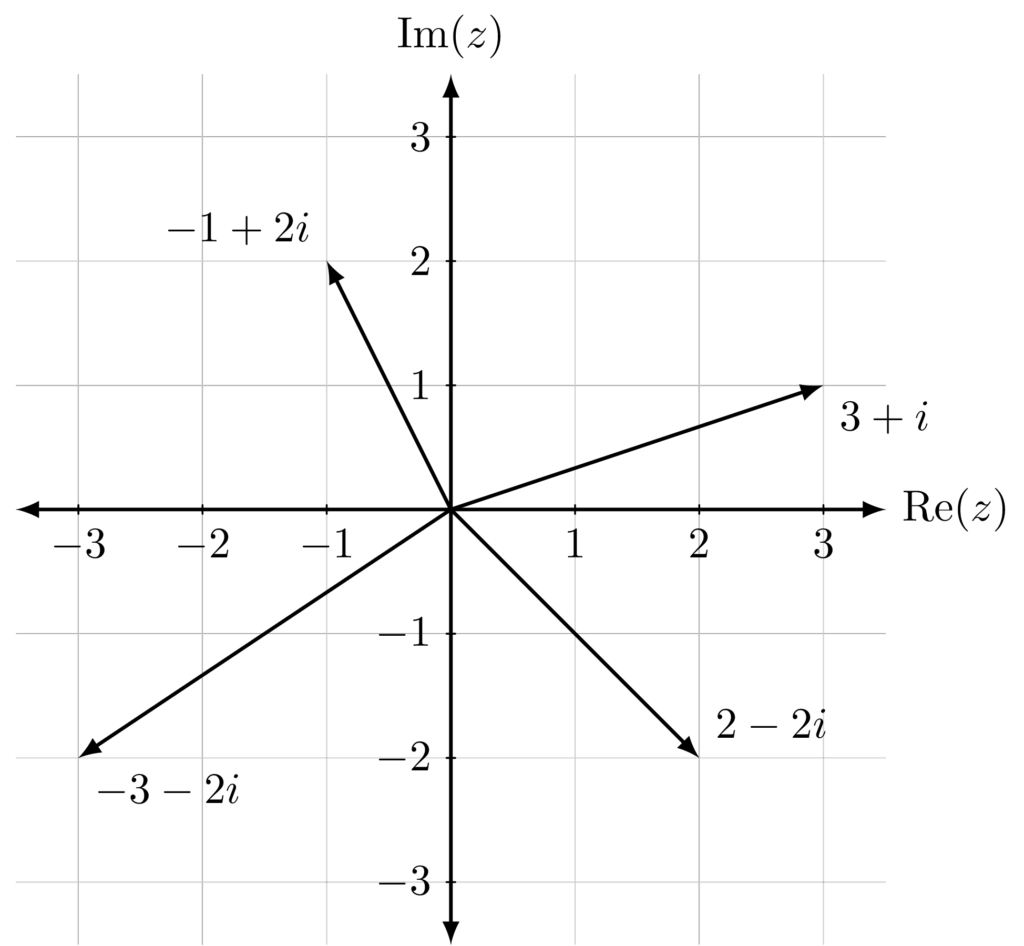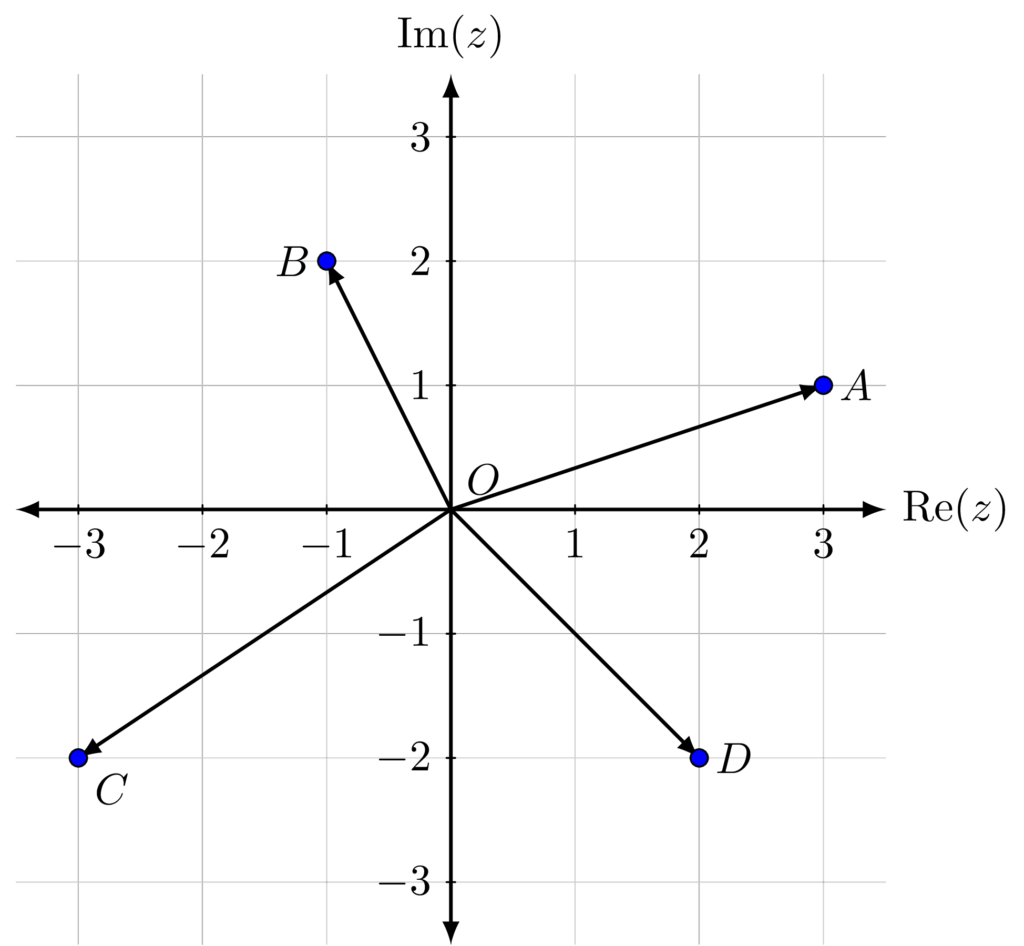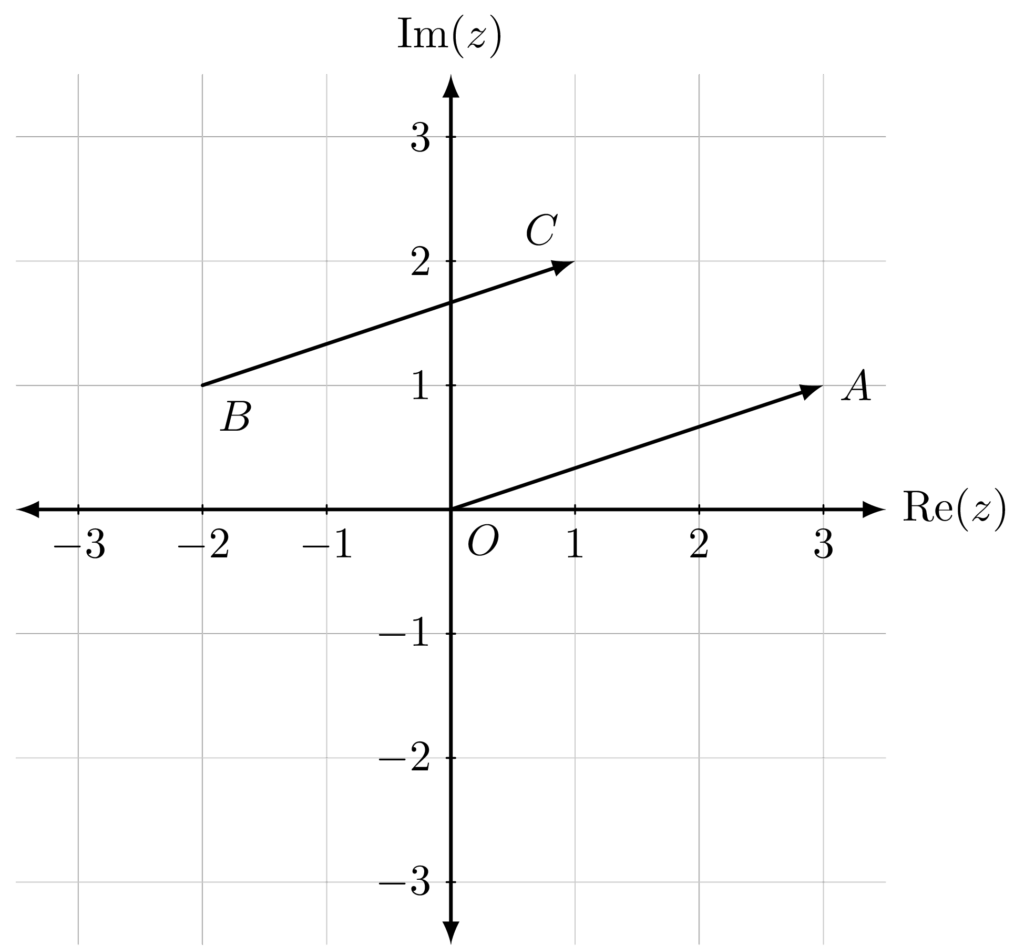A vector has both magnitude (size) and direction. Vectors are usually represented by arrows. Since complex numbers have a modulus (magnitude) and argument (direction), they can be represented as direction vectors from the origin of the complex plane.

We can also label the points and use arrow notation to represent the vector.

Here, we can use arrow notation to write \(\overrightarrow{OA}\) for the vector from \(O\) to \(A\). Note that \(\overrightarrow{OA} \ne \overrightarrow{AO}\) because they do not have the same direction (even though they have the same magnitude.
Vectors can be confusing because we can think of them as position vectors or as displacement vectors1. A displacement vector \(\overrightarrow{AB}\) represents a change in position from point \(A\) to \(B\). A position vector is the (displacement) vector from an arbitrary reference point (usually the origin \(O\)).

The complex number \(3+i\) is represented by the position vector \(\overrightarrow{OA}\), but the vector \(\overrightarrow{BC}\) is actually the same vector as \(\overrightarrow{OA}\) because they have the same magnitude (modulus) and direction (argument). We can think of \(\overrightarrow{BC}\) as the displacement vector from \(-2+i\) to \(1+2i\), that is, you move 3 units in the positive real direction and 1 unit in the positive imaginary direction.